Power Query: Expanding on Aggregating
8 November 2017
Welcome to our Power Query blog. This week I look at bringing in two tables of data and summarising some of that data. At the same time.
I have two tables of data which give me information about my items and charges, as shown below. I have several goals: I need report on the key item data and work out the total and average sales for each item.


I am going to create two queries, one to extract data from my Access database for each of my tables. As I am now using Excel 2016, I use the ‘New Query’ dropdown from the ‘Get and Transform’ section on the ‘Data’ tab:
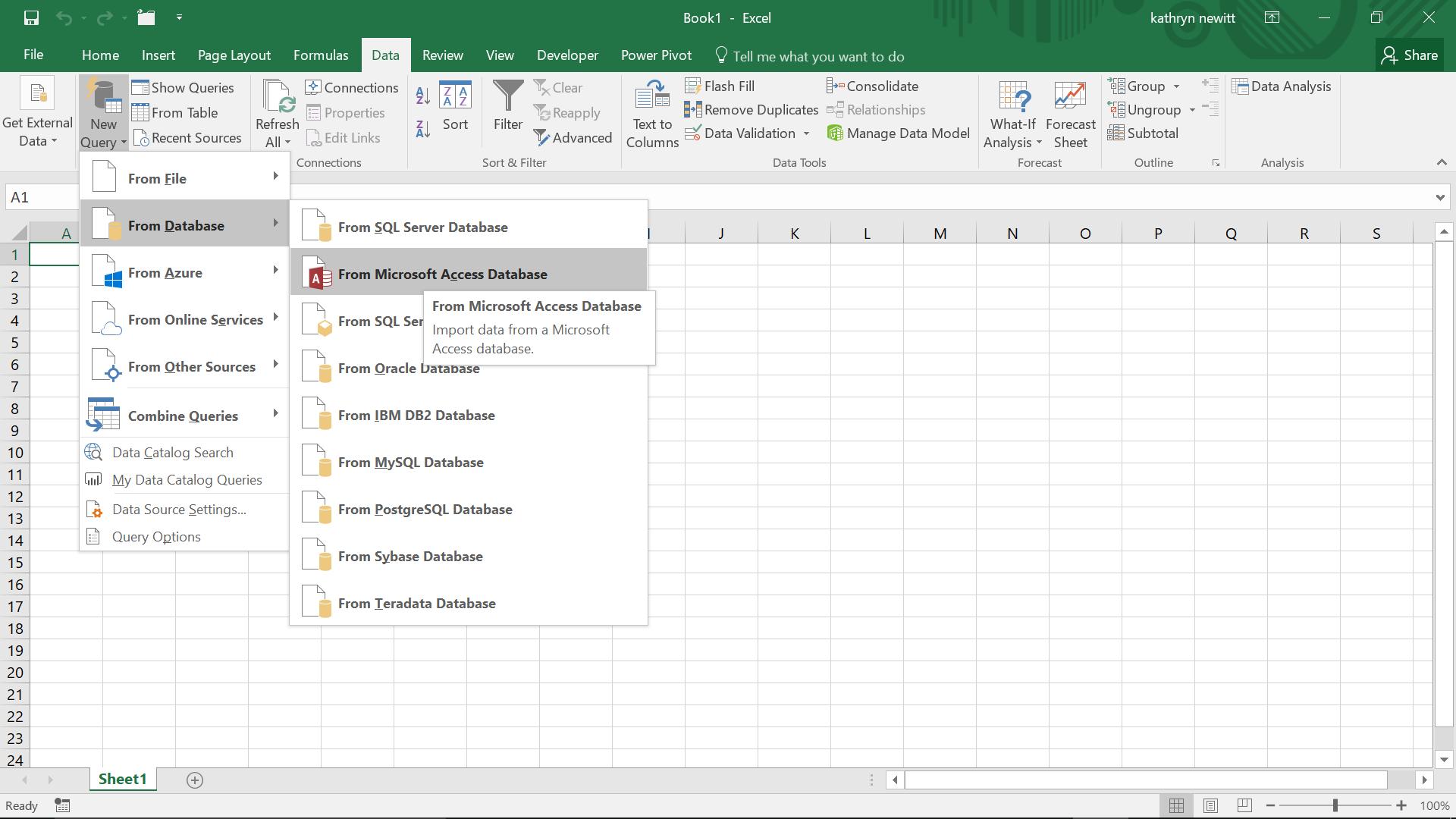
I choose to upload my data from the ‘Microsoft Access Database’ option, and having selected my database, the tables available are shown below.
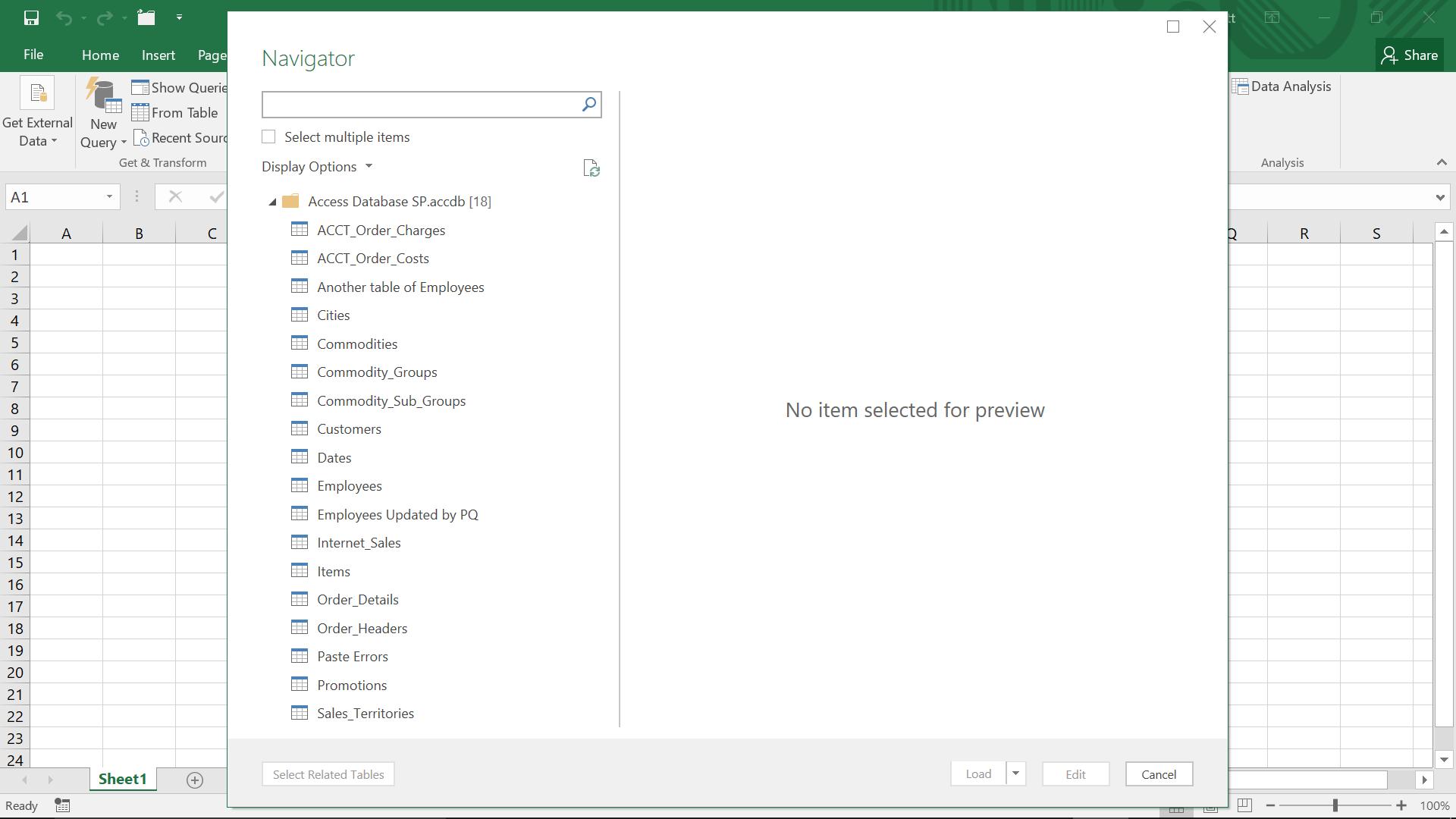
Since I am getting both my tables from this database, I check the ‘Select multiple items’ box.
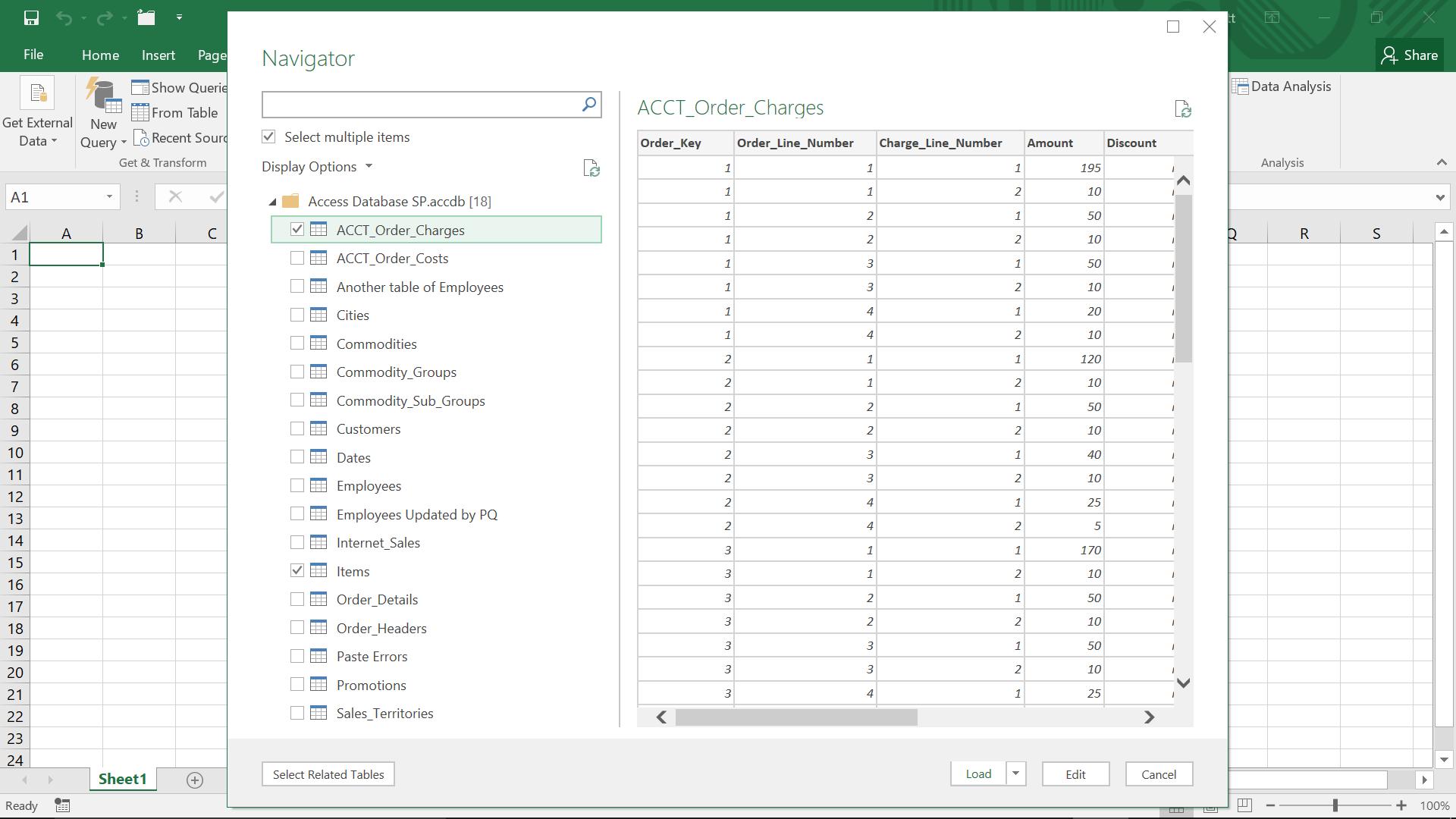
Checkboxes appear next to my tables, and I can select both tables that I am interested in: ‘ACCT_Order_Charges’ and ‘Items’. I can create both queries at once! I choose to ‘Edit’:
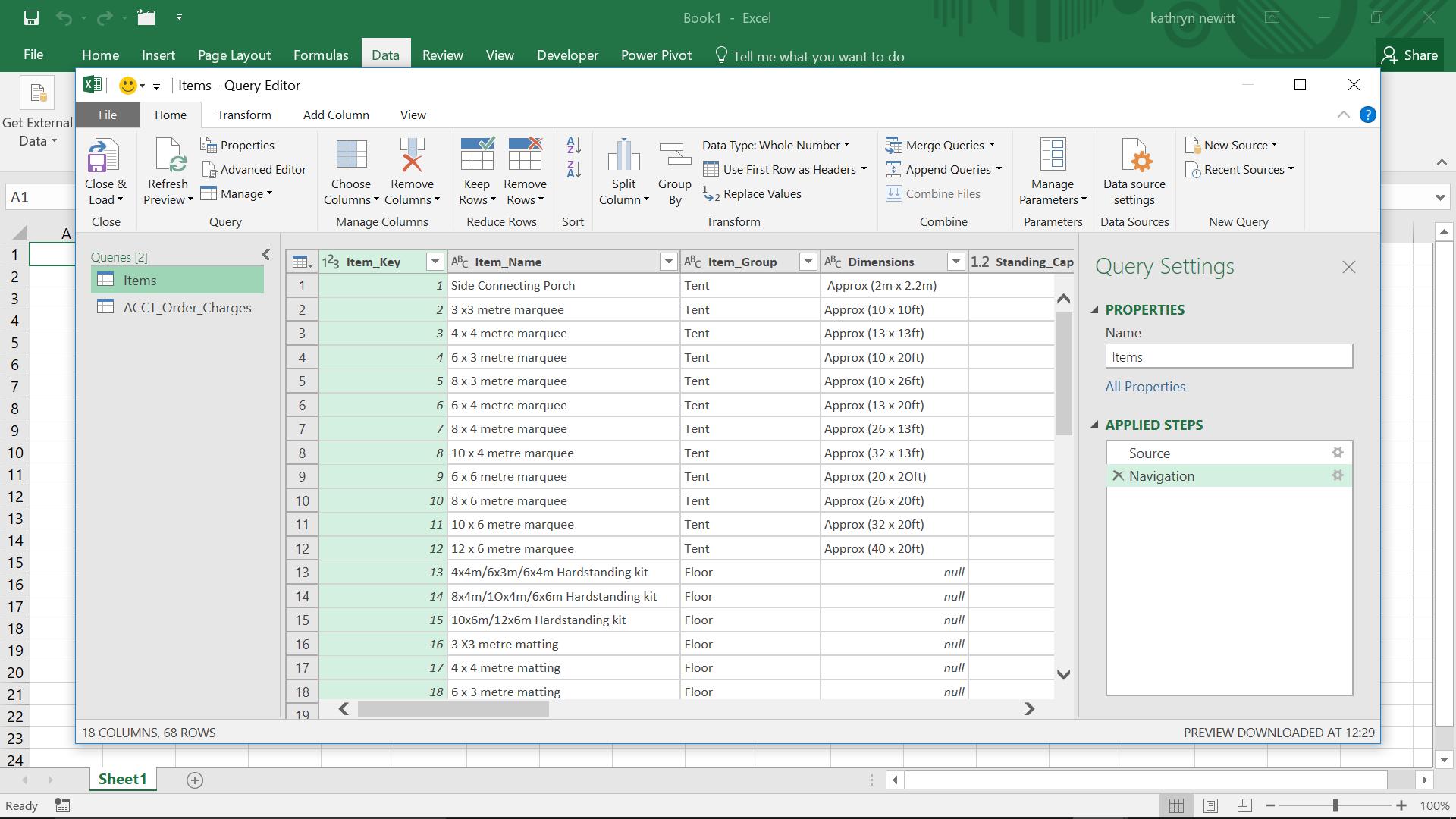
My two queries have been created. I will merge them, using the option ‘Merge Queries’ in the ‘Combine’ section on the ‘Home’ tab in the editor.
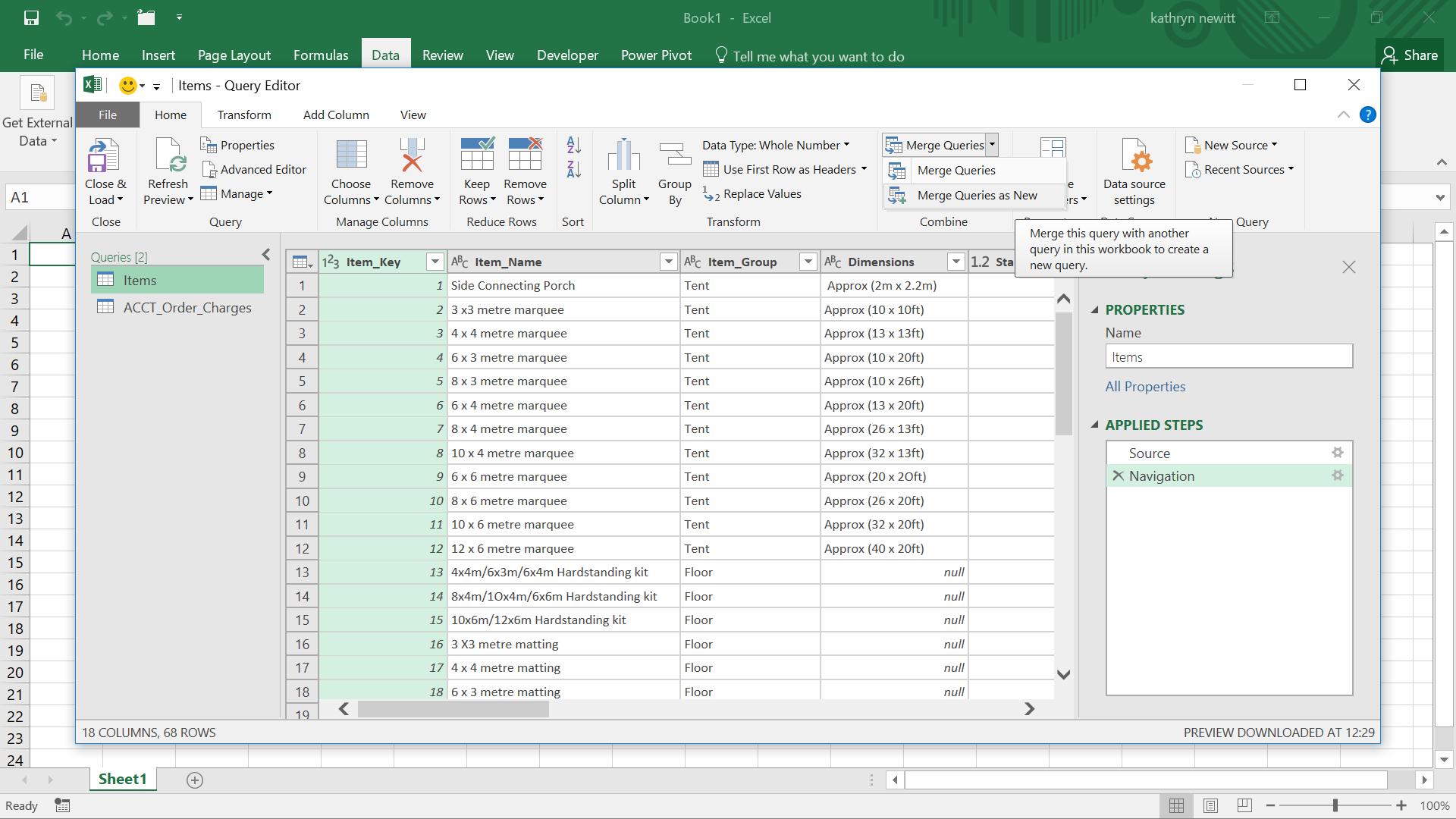
I choose to create a new query with my merged data, by choosing the ‘Merge Queries as New’ option.
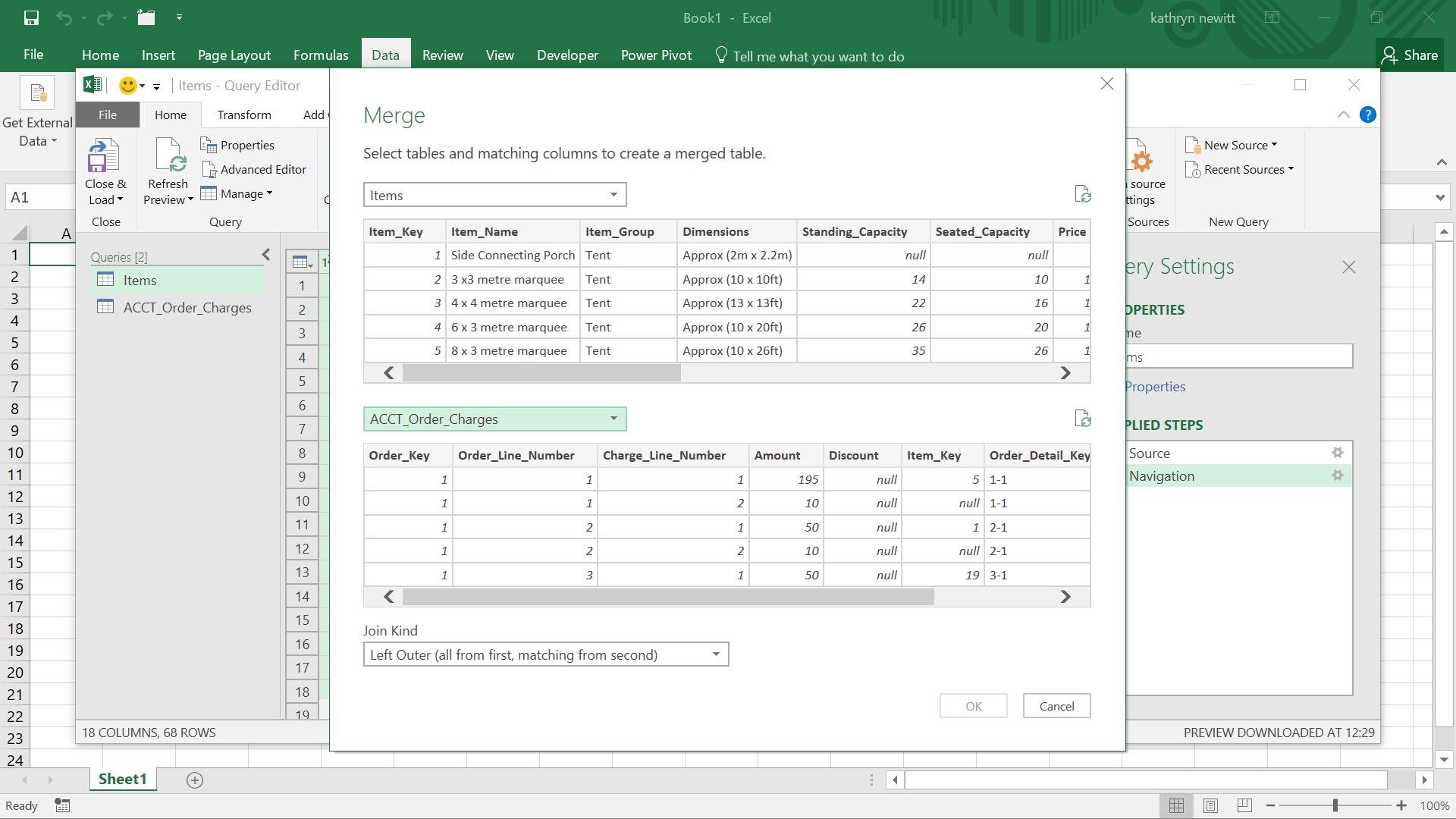
I need to select the field Item_Key from both queries, as this is how my queries are linked. Not all my charges data is related to items – some are delivery charges, so not all the charges will be merged. I choose the ‘Left Outer’ join as I want all my items, and only the charge data that relates to my items:
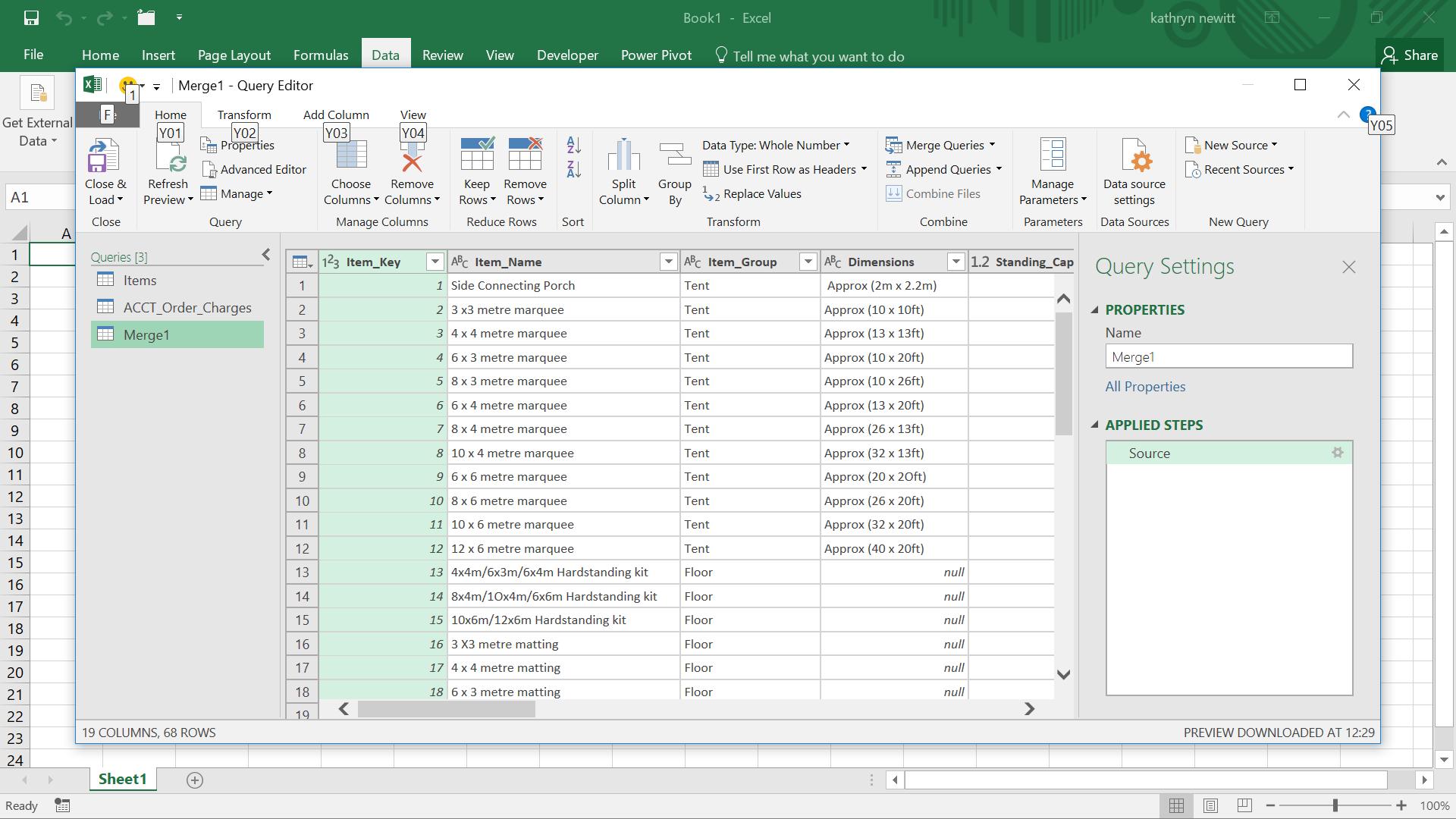
A new query, ‘Merge1’ has been created.
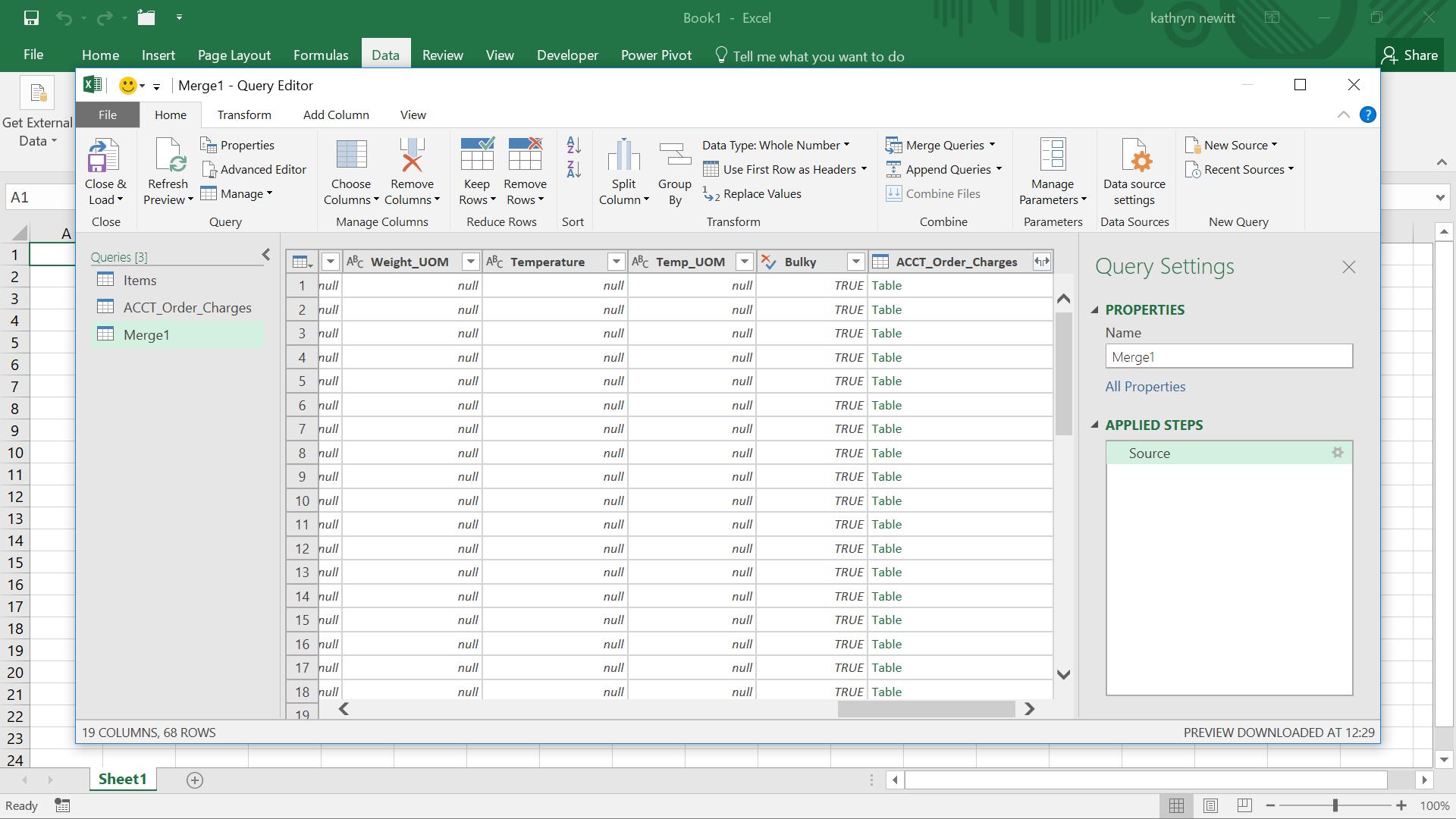
Next to my item data, there is a table column, which holds the data from the charges query under the heading ‘ACCT_Order_Charges’. I can click on the icon next to the ‘ACCT_Order_Charges’ heading and expand my data – but that’s not all I can do.
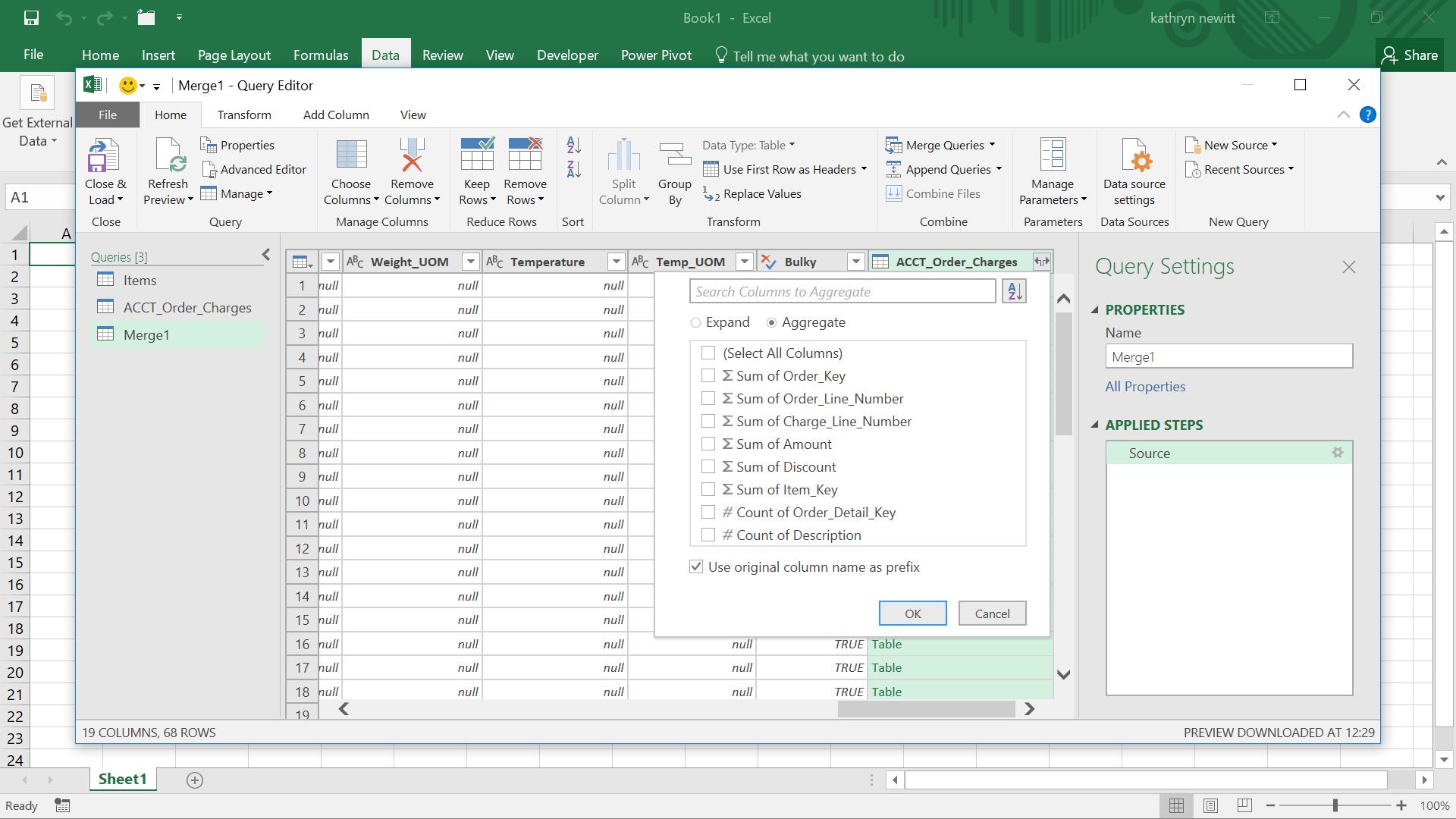
I want to find out the total and average sales for each item, so I can choose to ‘Aggregate’, rather than ‘Expand’. I could expand and then group my data if I needed more information from ‘ACCT_Order_Charges’, but in this case, I am only interested in the ‘Amount’. When I select the ‘Aggregate’ option I can see a number of calculations including ‘Sum of Amount’. I also choose not to have a prefix. However, there are more options next to the ‘Sum of Amount’, as shown below:
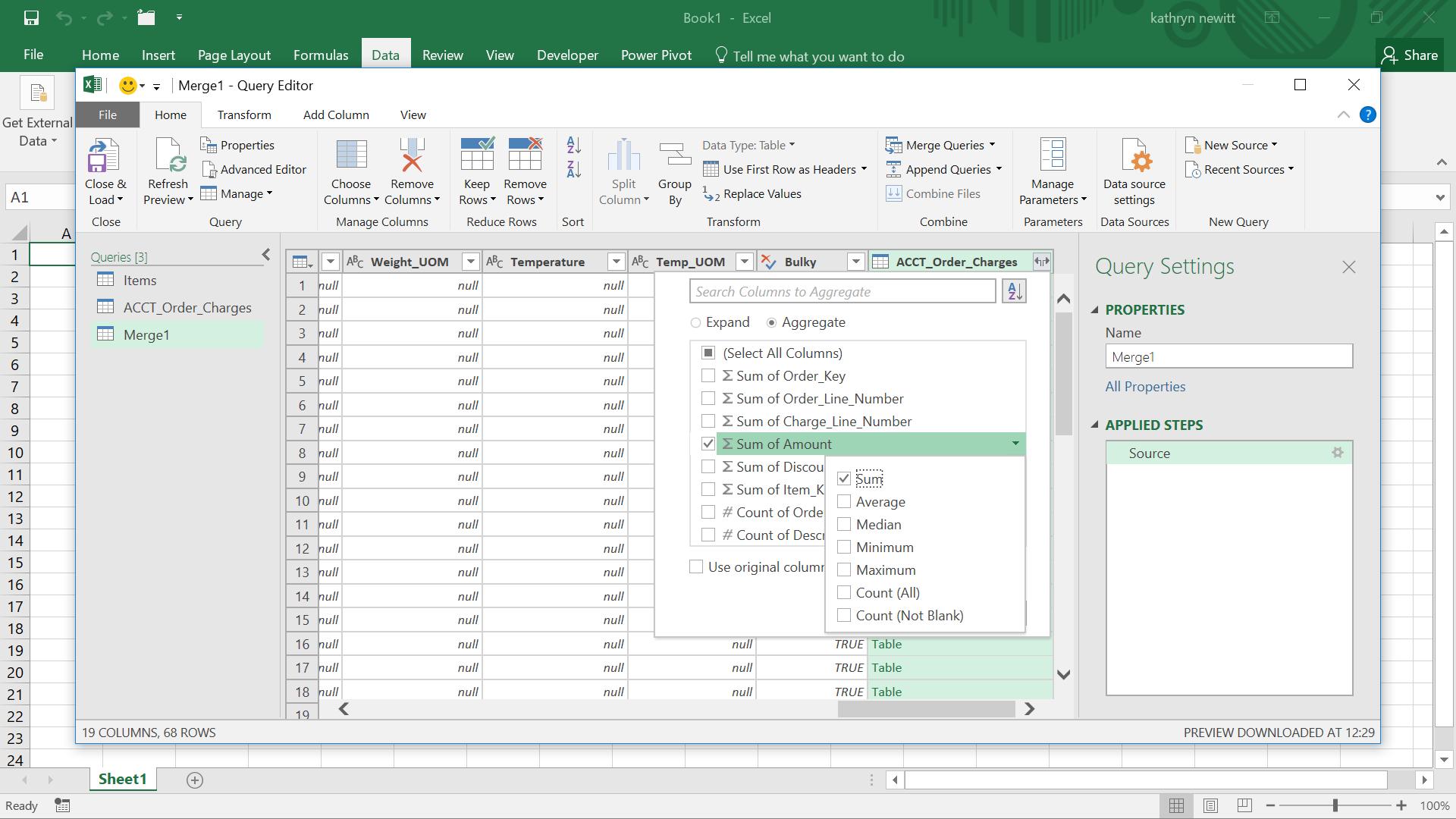
I can also see other calculations associated with the amount, so I choose the ‘Average’ too. This selection changes the ‘Sum of Amount’ title on the Expand / Aggregate screen.
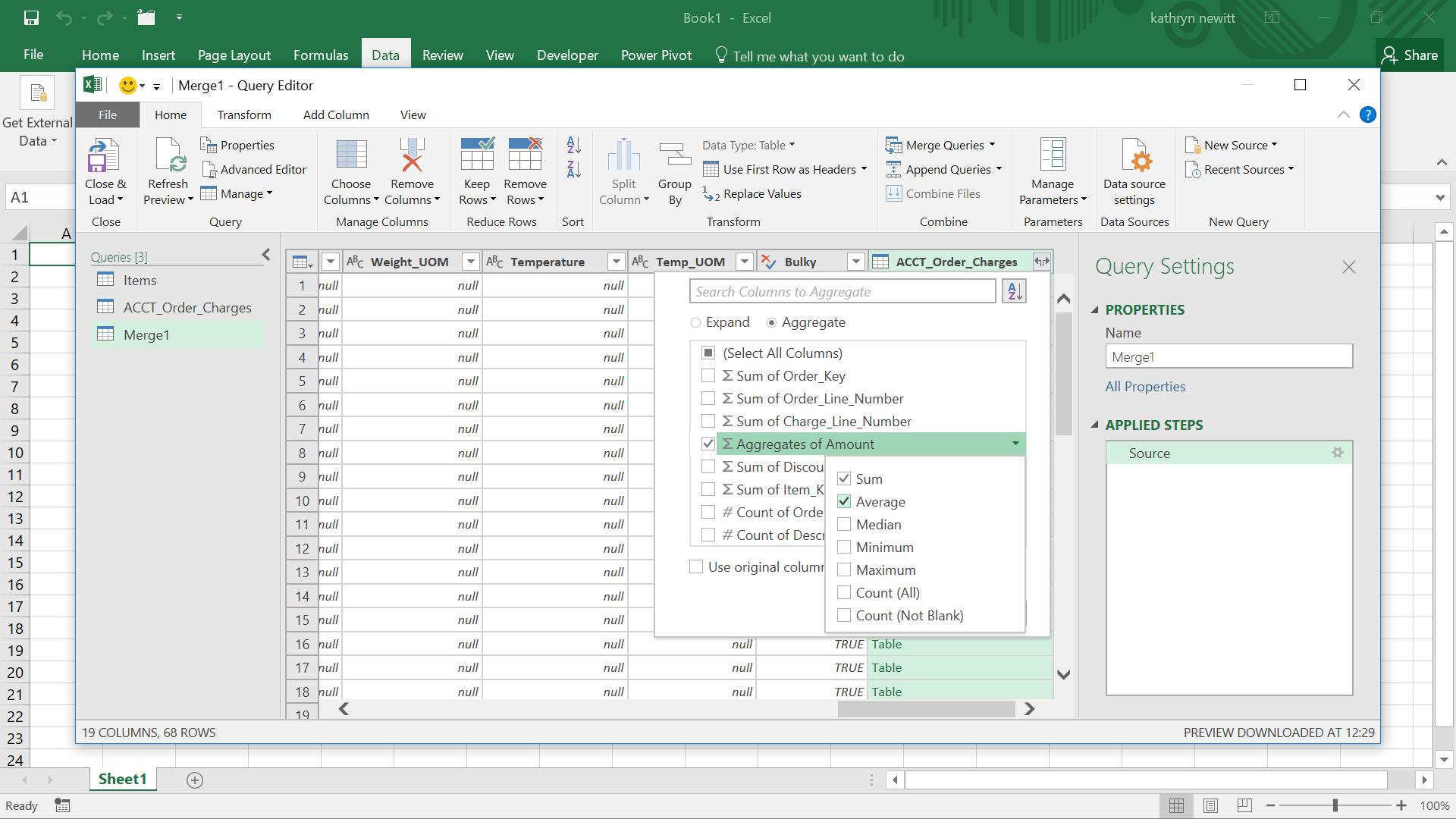
I choose ‘OK’ (I can click anywhere on the Expand / Aggregate screen to hide the ‘Aggregates of Amount’ dropdown) to see my results. I have deleted some of the irrelevant columns below to make the results easier to view:
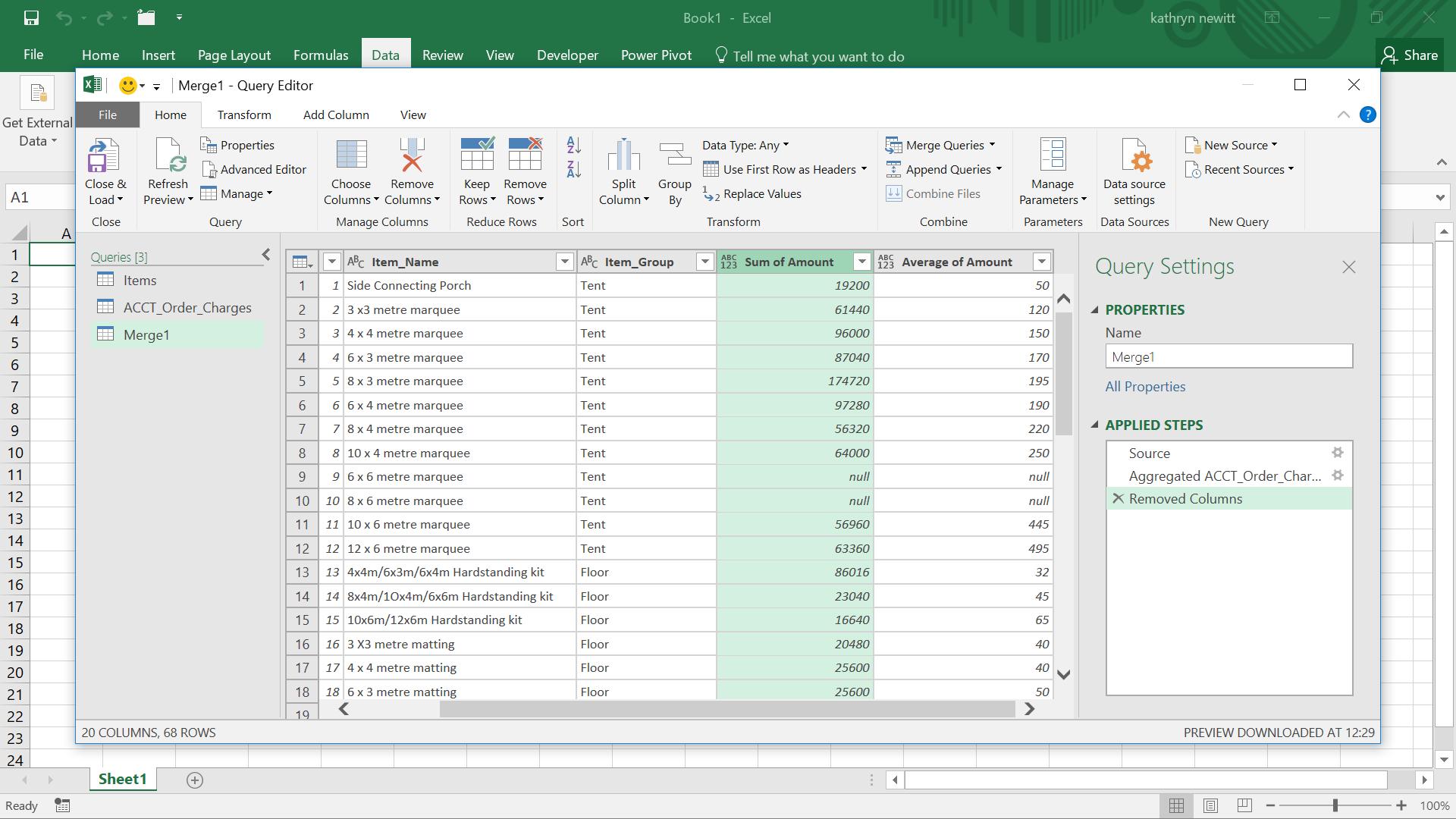
All I need to do now is make my headings and query name more useful, and I have my results ready to load to Excel, using the ‘Close & Load’ option.
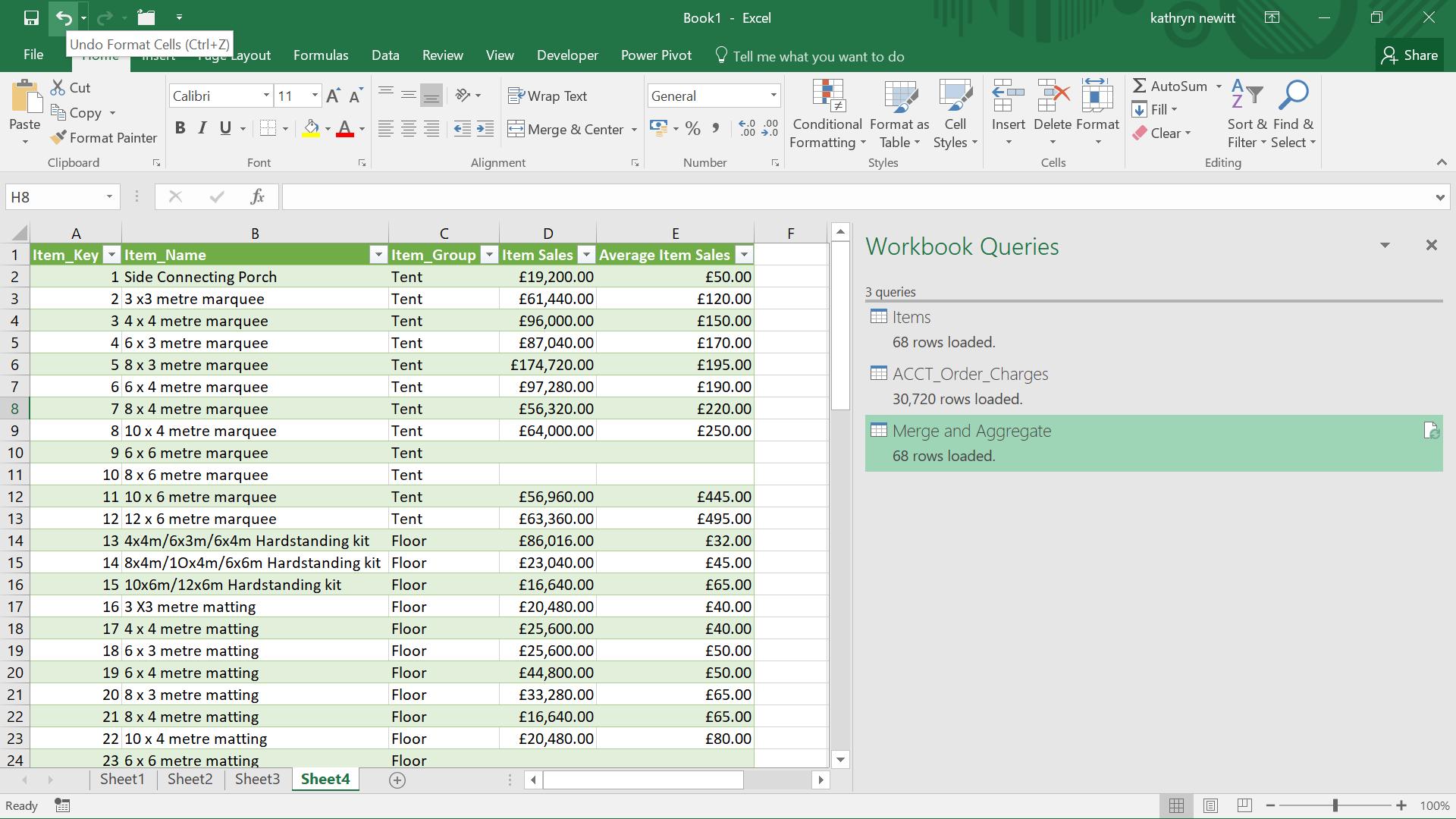
Want to read more about Power Query? A complete list of all our Power Query blogs can be found here. Come back next time for more ways to use Power Query!

